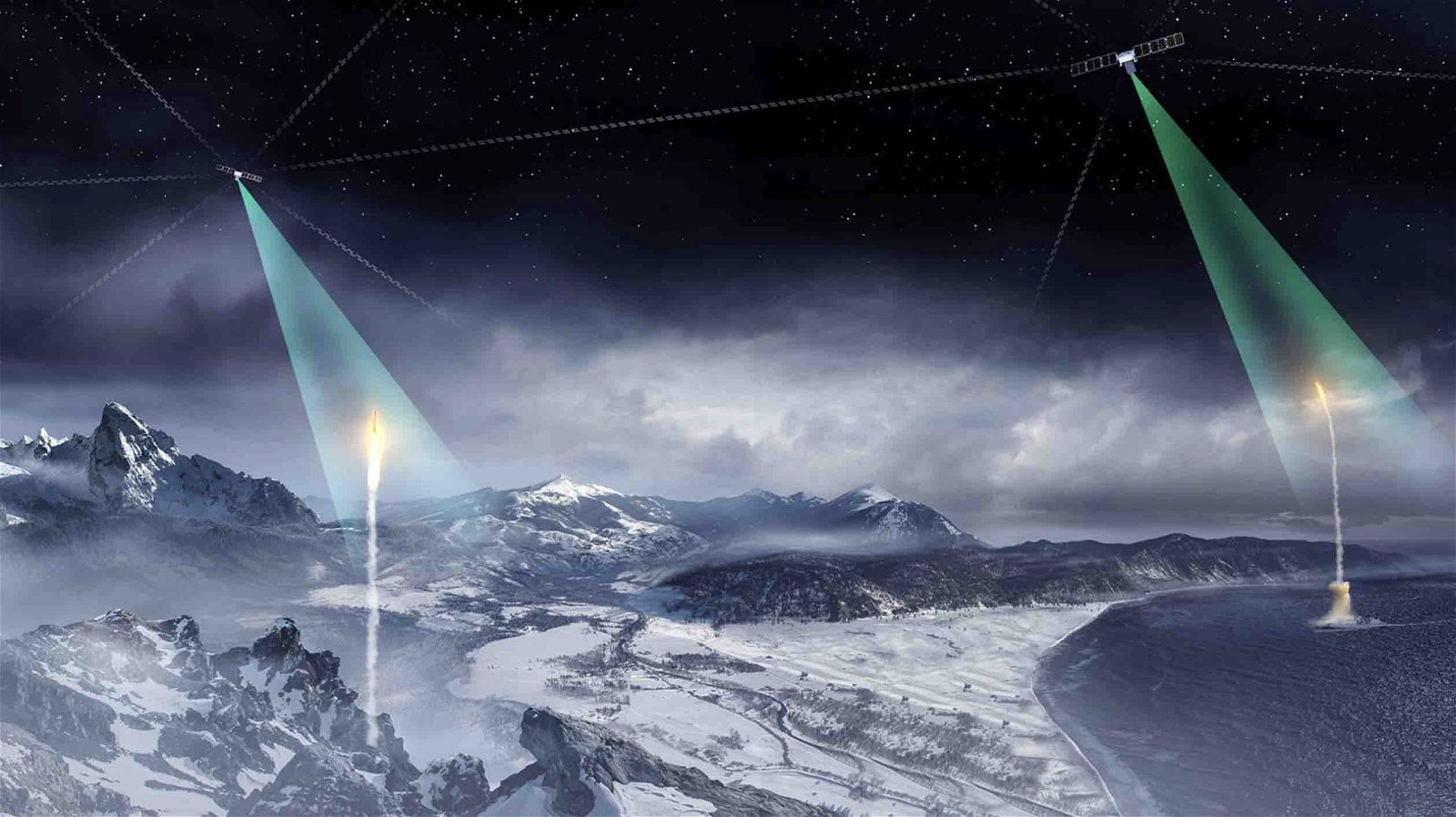The Space Development Agency (SDA) has announced it is moving forward with the development of a ground system infrastructure for its experimental “FOO Fighter” fire control satellites.
Boeing’s Millennium Space Systems is developing the Fire-Control On Orbit-support-to-the-war Fighter, or FOO Fighter (F2) system. The system will involve an array of eight prototype satellites capable of high-fidelity tracking of adversary missiles and providing precise coordinates to missile defense interceptors.
The program “will accelerate the ability to provide fire-control in support of global detection, warning, and precision tracking of advanced missile threats, including hypersonic missile systems,” according to a draft solicitation released by the SDA last fall. “The F2 system will demonstrate advanced missile defense capability by incorporating fire control-quality sensors into a prototype constellation,” the solicitation adds.
This week, it was revealed that the first request for proposals for the experimental satellites is set to be released on June 18, according to SDA Director Derek Tournear, who spoke with reporters on May 24. The proposal request was first reported by Breaking Defense.
According to its current timelines, the SDA plans to solicit proposals for contractors to develop and manage the ground system backbone for the FOO Fighter program. This initiative marks a significant step toward advancing the U.S.’s satellite-based missile defense capabilities.
Tournear explained on Friday that a pre-RFP announcement had been posted on the SAM.gov website, detailing the SDA’s solicitation for an integrator to develop and manage the ground system for the FOO Fighter program.
The first solicitation, called the “Advanced Fire Control Ground Integration,” is looking for contractors to lay the groundwork for the program through the establishment of a developmental operations center (DOC) at Redstone Arsenal in Huntsville, Alabama.
The development of the system’s DOC will include the construction of ground entry points for data downlinks, cloud hosting for computing, and providing the IT resources that will support the FOO Fighter program during its initial stages, as well as later providing support for other fire control demonstrations.
This will be followed by a second solicitation, the “Advanced Fire Control Mission Integration” (AFCMI), later this summer. This solicitation will secure a contractor to oversee ground-based operations for the management of incoming data from the FOO Fighter and future demonstrations, helping to propel the program toward eventual use with military operators.
Originally, the SDA had envisioned hiring a sole contractor to oversee all of the program’s demonstration satellites under the Proliferated Warfighter Space Architecture (PWSA) Futures Program (PFP). This included the T1DES (Tranche 1 Demonstration and Experimentation System) project and the T2DES (Transport Layer Tranche 2).
Following additional feedback from industry stakeholders, an additional draft solicitation was issued last month, prompting SDA to take a slightly different approach.
The April 30 solicitation announced an award “using Other Transaction Authority (OTA) with a total potential value of approximately $414 million to build eight satellites, for launch in first quarter fiscal year 2027,” revealing that the fixed-price agreement had been awarded to California-based Millennium Space Systems, Inc.
“The FOO Fighter program will provide an operational demonstration of fire control efforts separate from, but complementary to, our missile warning/missile tracking and missile defense efforts already underway in the tranches,” Tournear said, accompanying the solicitation’s release.
“We look forward to working with Millennium, a new teammate in the expanding marketplace of performers innovating to deliver the PWSA for the warfighter,” Tournear said.
Tournear told reporters on Friday that feedback from the industry made it evident that the previous solicitation had been confusing due to the level of complication it involved, likely making it very difficult for any prospective contractor to execute. It was, therefore, impractical for SDA to depend on a single contractor to manage the full range of technologies the FOO Fighter program will require.
Tournear said the new ground system for fire control must be operational before the FOO Fighter satellites are launched. Current estimates aim to have them in orbit by the first quarter of fiscal 2027.
“The contracts will start in the first week of December 2024, and then everything will be in place by the summer of 2026,” Tournear said last week, emphasizing that SDA plans to have the infrastructure for the program’s operation ready well ahead of the satellite launch.
The program’s unique title is more than just a random designator. The name appears to be rather obviously derived from a nickname given to phenomena encountered by Allied pilots flying over Europe during the Second World War who, as early as March 1942, began reporting sightings of unusual lights that reportedly paced their aircraft.
The odd name incorporated the word “foo,” first used and popularized by artist Bill Holman, who created the then-popular Smokey Stover cartoon strip. The term “Foo Fighter” was believed to have first been used by Donald J. Meiers, a radar operator with the 415th Night Fighter Squadron.
Additional details about the SDA’s FOO Fighter program can be found on the agency’s website.
Micah Hanks is the Editor-in-Chief and Co-Founder of The Debrief. He can be reached by email at micah@thedebrief.org. Follow his work at micahhanks.com and on X: @MicahHanks.

